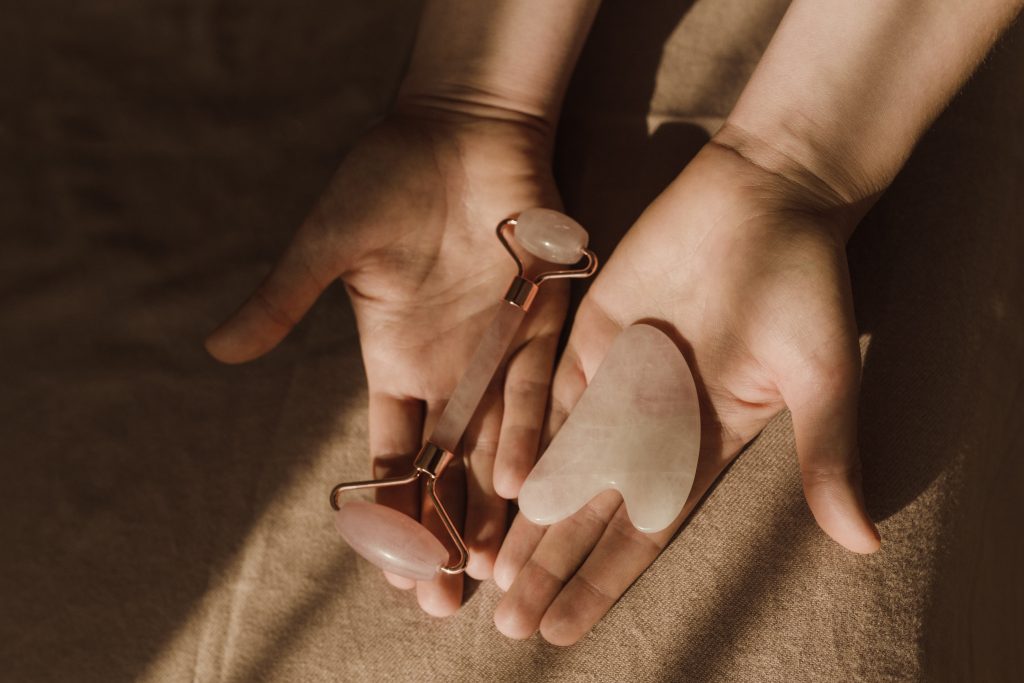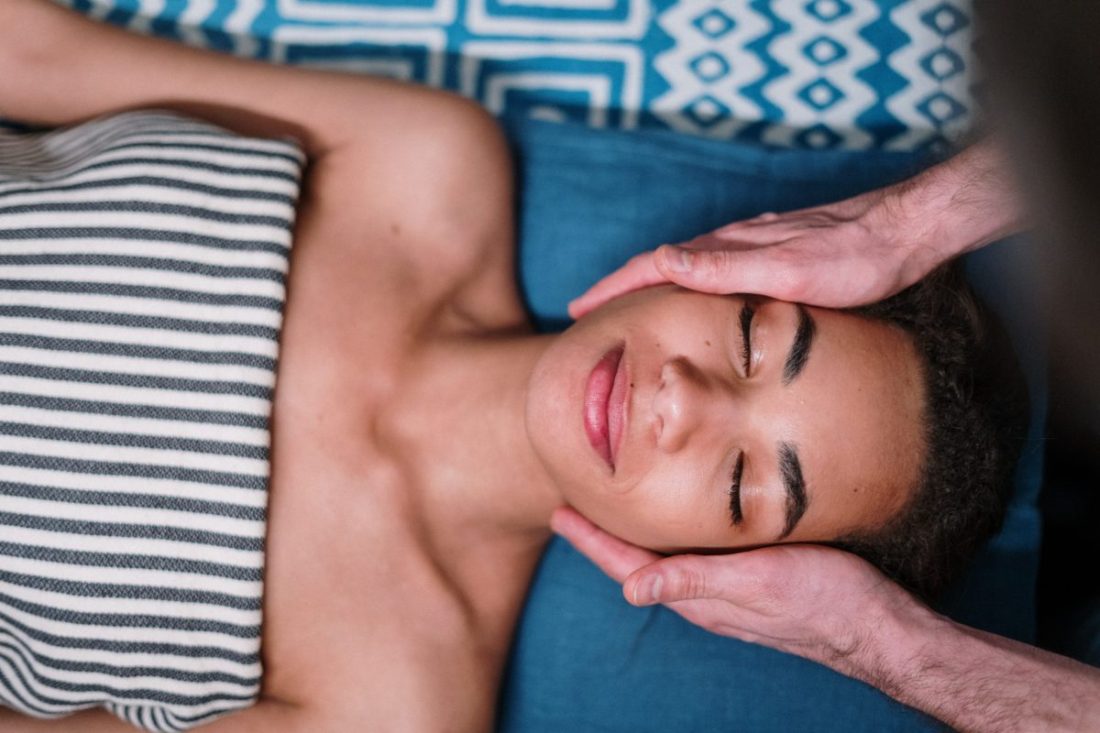Face Massage Techniques for Facial Rejuvenation
A good face massage can help you feel relaxed and rejuvenated. One of the best parts of a facial massage is that you can do it yourself, wherever and whenever. You only need your hands and a few moments of quiet to reduce stress and improve your wellness.
Here’s everything you need to know about facial massages, how they help, and how to do it yourself.
What Is a Facial Massage?
A facial massage is a gentle, localized form of massage therapy that focuses solely on the skin and muscles in and around your face. It’s a calming, relaxing massage technique that uses much gentler pressure than a sports massage or deep tissue massage. During a face massage, you focus on rubbing and stretching through different movements on your face, jaw, and temples.
Think about squinting in the sun, smiling through a long photo session, or chewing a tough steak. These activities create tension in your face that, before you know it, may make you feel uncomfortable or stressed out. At its most basic, a face massage is about relaxing those tired facial muscles.
From the simplest facial massage using just your fingers and a dab of lotion to more advanced massage techniques that involve jade rollers and gua sha tools, this type of massage is an excellent way to feel refreshed.
Facial Massage Techniques
A standard facial massage is similar to a Swedish massage that you get on your back or shoulders. It’s a broad, relaxing massage that involves much shallower pressure than you’d use for a sports massage. You (or a massage therapist) will knead, stroke, pinch, and use other movements to apply gentle pressure to the muscles in and around your face.
Meanwhile, Shiatsu and reflexology massage techniques focus on specific acupressure points that affect the flow of energy—qi—through your body. Both of these can be done as a form of facial massage, too, with the aim of relieving facial tension in your face and helping your skin appear tighter.
There’s yet another technique that’s often discussed as part of facial massage: lymphatic drainage.
About Lymphatic Drainage and Facial Massage
You may have heard about lymphatic drainage as a way to reduce swelling. Lymphatic fluids help move toxins out of your body, and massage therapy can help drain those fluids when they build up in your tissue.
Lymphatic drainage is a specific type of massage that aims to release trapped moisture that gets left behind in body tissue. That fluid may be the cause of the swelling and “puffiness” that many people want to eliminate on their journey to glowing skin.
A lymphatic drainage massage on your face aims to reduce puffiness and help “sculpt” the face. But you’re not really changing its shape; rather, you’re temporarily removing excess fluid, which might contribute to a more sculpted look.
Benefits of Facial Massage Therapy
Like most massages, one of the main benefits of a face massage is relaxation. Whether you have two minutes or ten, a facial massage is a great way to prepare yourself in the morning for the day ahead or wind down at night.
There’s never a bad time for the soothing feeling of releasing tension in your face and neck and applying some hydrating, refreshing lotion to your skin after a thorough cleansing.
Like other massage techniques, research has shown facial massage to be effective at promoting blood circulation. In a 2018 study, using a facial massage roller increased blood flow in participants’ skin. Massage therapy can also help reduce tension in your body and offer relief from tension headaches—including their duration and intensity—according to the American Massage Therapy Association.
Using facial massage techniques while you cleanse your face can help you do a more thorough cleaning, especially if you’re prone to oily skin or if you’re washing off makeup, sunscreen, or tanning oil. In addition, a regular facial massage promotes collagen production and can contribute to that feeling of glowing skin that you have when you’re confident and comfortable. Nearly 60 percent of participants in a 2002 study reported that their skin felt supple and rejuvenated after beauty treatments that included facial massages.
How to Do a Face Massage
A face massage is one of the easiest types of massage therapy, and that makes it perfect for a massage at home.
Preparation
To start, wash your hands with soap and your face with your favorite facial cleanser. You can also use the steam from a hot towel to help open up the pores in your face. Then, tie back your hair so it’s not in your way.

Apply some facial oil or creamy moisturizing lotion to your face to help your fingers glide smoothly over your dry skin as you massage. This step isn’t necessary, but it will help make the experience much more comfortable and relaxing.
You can add a few drops of your favorite essential oils to the mix, as well. Essential oils that work well for a facial massage include the following:
- Argan oil contains moisturizing vitamin E and antioxidants.1
- Chamomile oil has anti-inflammatory and antioxidant properties.2
- Jojoba oil has antibacterial and moisturizing properties.3
Facial massage doesn’t have to be separate from your existing habits. If you’re already pressed for time in your morning skincare routine, include some massaging techniques as you wash your face or use a moisturizing lotion.
Use Your Hands
Giving yourself a facial massage can involve whatever motions and techniques you find most soothing, although there are some tips you can follow for specific results. You only have to do these movements for about 30 seconds each, or as long as you feel comfortable.
Start at the Top
Generally, you’ll start by rubbing your index fingers and middle fingers into your temples and forehead slowly while applying steady, light pressure. Use small circles and gradually move your fingers around to different areas. Some people recommend using your palms to apply even pressure in slow, wide circles.
Place your fingers on the middle of your brow and make small circles there. Then, press and push your fingers up over your forehead to the top of your face. You can use three or four fingers at a time and both hands to do this. Continue the movement slowly outward and down to your temples. There, press into your temples near your ears and down to your jaw.
Massage Cheekbones, Lips, and Mouth
Next, massage your cheekbones, pressing with your fingertips or knuckles. Glide your fingers slowly from your nose out to your ears.
Then, gently pinch your mouth between the index and middle finger of each hand. While applying gentle steady pressure, pull your fingers toward the sides of your face.
Next, slide your fingers or palms from the sides of your face down to your jaw. As you’re massaging, you’re also going to focus on moving with your contours—sliding your hands away from the center of your face and upward from neck to chin to help “sculpt” your facial features.
Don’t Forget What’s Around Your Face
Remember to massage your neck and the area under your ears where additional tension can build up. For your neck, slide your fingers in vertical movements from your collarbone upward to your chin.
Facial Massage Quick Tips
• Go gently around your eyes area
• Use your palms for deeper, broader strokes
• Reapply facial oil or lotion as needed
• Take deep breaths and let yourself relax
• Use the tools below
Give Your Hands a Hand

You don’t have to depend solely on your hands to give yourself a facial massage. There are several types of tools you can use to take your massage to the next level.
- Jade roller. Using a jade roller, a facial massage tool that has a cooling effect on your skin that is meant to help reduce puffiness in your face.
- Gua sha tool. A gua sha tool, or jade scraper, is designed to drain excess fluid in your cheeks and under your eyes.
- Pao device. In a 2018 study, women who used a Pao device on their faces twice daily for eight weeks showed signs of facial rejuvenation, including increased facial muscle thickness.
- Humidifier/Diffuser. Using a humidifier or a diffuser while conducting a facial massage can help hydrate and soothe the outer layers of your skin to add to the complete package of your massage.
Achieve Glowing Skin with Facial Massage Techniques
Never tell yourself that you’re too busy to sneak a facial massage in. Face muscles deserve your care and attention, too, and you’ll feel all the better for taking a minute to relieve that muscle tension and rejuvenate your skin.
Medical Disclaimer: This content is provided for informational purposes only and is not intended to be a substitute for professional medical advice, diagnosis, or treatment.
Sources
- Argan Oil for Skin: Benefits and Uses for All Skin Types
- Chamomile: A herbal medicine of the past with bright future – PMC
- Lymphatic Drainage Massage: What it Is, Benefits & How To Do It
- Systematic Review of Efficacy for Manual Lymphatic Drainage Techniques in Sports Medicine and Rehabilitation: An Evidence-Based Practice Approach – PMC
- Effect of a Facial Muscle Exercise Device on Facial Rejuvenation | Aesthetic Surgery Journal | Oxford Academic
- Rejuvenating facial massage – a bane or boon? – Khanna – 2002 – International Journal of Dermatology – Wiley Online Library

